EOS C70 Body
Please accept the Terms & Conditions for Auto Replenishment Service before adding the item to cart.
- Super 35mm Dual Gain Output (DGO) Sensor, 16+ stops of Total Dynamic Range
- DIG!C DV7 Image Processor
- Canon Log 2 and 3, PQ, and HLG Recording
- RF Mount
- EF Lens Compatibility with Mount Adapter EF-EOS R 0.71x
- Direct Touch Control
- XF-AVC 4K Intra-frame 60p
- Eye AF, Face Detection AF and Subject Tracking AF in Slow & Fast Recording Modes (24-120p)
- Canon 709 Custom Picture Profile
- CMT 709 Viewing/ Monitoring Assistance
- IP-based Remote Control via Canon XC Protocol
- 4 Channels of Audio Monitoring on Display
- Full communications with Cine-Servo 15-120mm EF Lens: DPAF and DP Focus Guide
- Support for Flex Zoom 45-135mm EF Lens with DP Focus Guide
Returns Policy
Overview


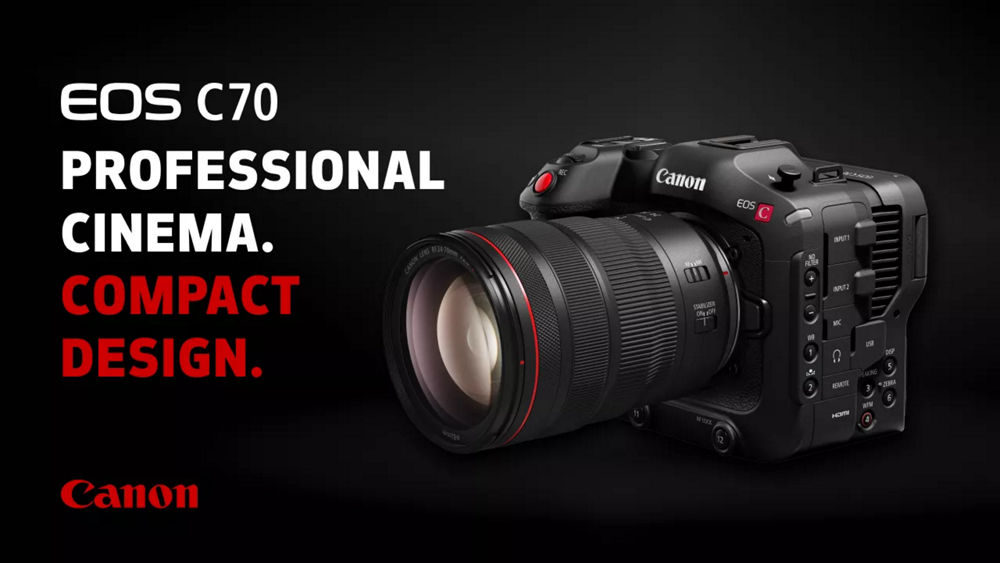

PROFESSIONAL CINEMA. COMPACT DESIGN
The Canon EOS C70 offers exceptional cinema capabilities in a compact package. Enjoy stunning images with a 4K Super 35mm DGO Sensor and all the built-in features you could ask for, including ND Filters, mini XLRs, direct touch rotatable LCD screen, Dual Pixel CMOS Autofocus, and excellent battery life. Making the EOS C70 even more powerful is compatibility with Canon's expanding line of high-performance RF Lenses.
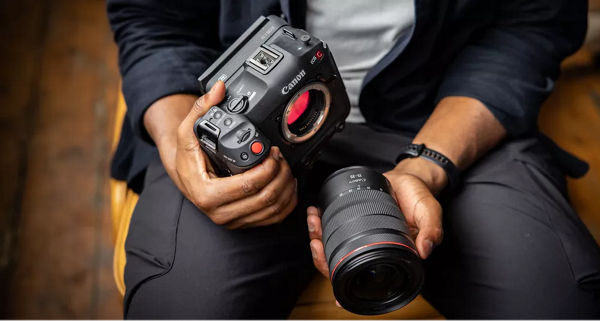



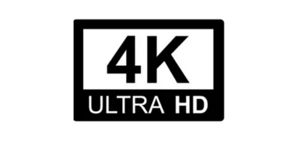

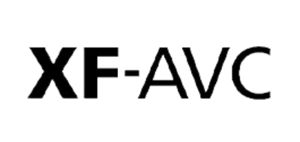

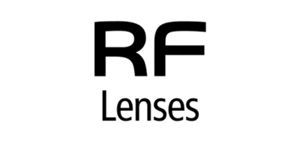

IMPRESSIVE IMAGE QUALITY
Get smooth blacks and bold colours. The EOS C70’s Super 35mm DGO Sensor generates 16+ stops of total dynamic range and maintains low noise levels in order to prioritize saturation for bright areas and lower noise for darker areas.
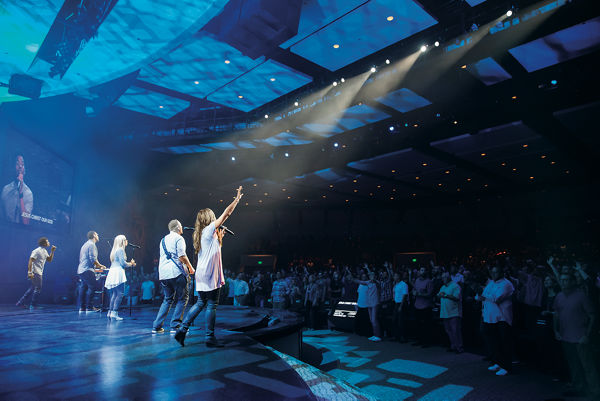

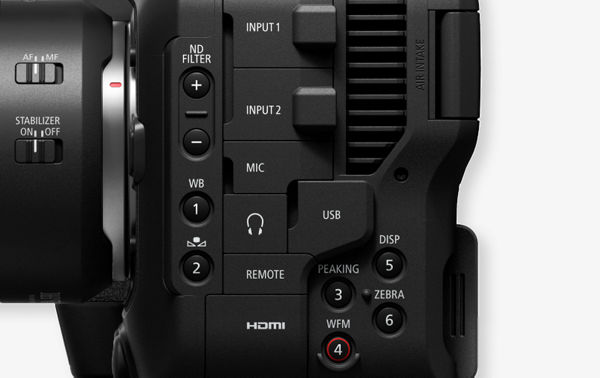

MORE BUILT-INS, LESS ADD-ONS, MAX VALUE
Start shooting from day one with all the built-ins you could ask for including ND filters for various lighting conditions, mini XLRs for professional audio recording, and dual SD card slots for simultaneous recording in different formats. Access it all with one hand on the direct touch rotatable LCD screen, allowing for on-the-spot changes while holding the camera.
SERIOUS CINEMA IN A SMALL PACKAGE
Control your dynamic range by choosing between Canon Log 2 or Canon Log 3 Gamma, and capture frame rates up to 120 fps in 4K or up to 180 fps in 2K CROP mode–all with electronic image stabilization. Enhance the EOS C70 further by synchronizing multi-camera productions via the built-in timecode port and adding Cinema RAW Light internal recording, Canon 709 Custom Picture Profile, XF-AVC Intra 4K 60p recording, and other new features via a free firmware upgrade.


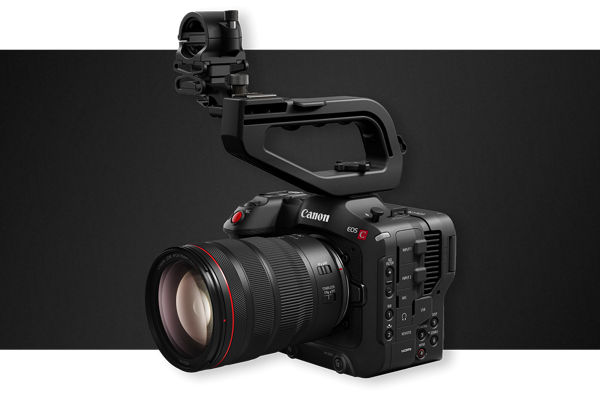

BUILT TO BE TAKEN ANYWHERE
Designed to go where you go, the EOS C70's unibody design exhibits a compact form factor and a built-in ergonomic grip that makes handheld shooting easy and comfortable.


CANON’S RF SYSTEM & LEGENDARY LENSES
The EOS C70 is a cinema powerhouse all on its own and is engineered with a built-in RF mount for compatibility with Canon’s expanding line of high-performance RF Lenses.
For increased flexibility, the EOS C70 is also compatible with Canon’s line of award-winning EF lenses using the Mount Adapter EF-EOS R 0.71x. This maintains a similar full-frame angle of view on the Super 35mm sensor, but boosts the speed of the attached lens by an average of 1-stop.
FEATURES
Super 35mm Dual Gain Output (DGO) Sensor
The EOS C70 features Canon's next generation Super 35mm Dual Gain Output (DGO) Sensor. This sensor is capable of a total dynamic range in excess of 16 stops and includes Canon’s exclusive Dual Pixel CMOS Autofocus technology.
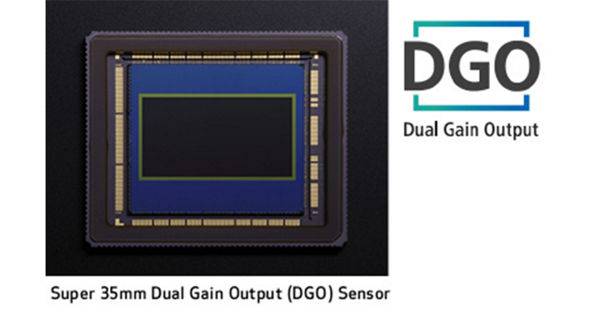



The DGO Sensor is an imaging system that generates high dynamic range and maintains low noise levels by reading out each photodiode with two different gains. It combines the two with a saturation prioritizing gain for bright areas, and a lower noise prioritizing gain for darker areas.
Enhanced Clear Scan Mode
Clear Scan shutter mode helps reduce or virtually eliminate the flickering caused by some LED walls.


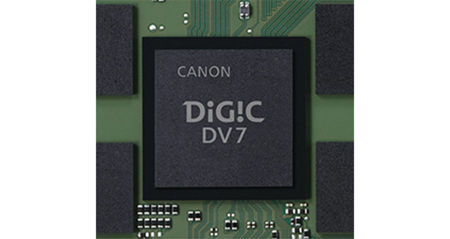

Super 35mm Dual Gain Output (DGO) Sensor
The EOS C70 features Canon's next generation Super 35mm Dual Gain Output (DGO) Sensor. This sensor is capable of a total dynamic range in excess of 16 stops and includes Canon’s exclusive Dual Pixel CMOS Autofocus technology.
Canon Log 2 and 3, PQ, and HLG Recording
The EOS C70 supports both Canon Log 2 and Canon Log 3 Gamma. In post-production, Canon Log is designed to reproduce the entire tonal range that the CMOS image sensor is capable of. Log workflows provide the user with higher dynamic range (16+ stops), more highlight and shadow retention, and more flexibility in colour grading.
Canon Log 2 provides the largest dynamic range and image detail. However, while Canon Log 2 provides the most post-production flexibility and full dynamic range of the sensor, it typically requires more time in post and colour correction.
For users looking for most of the benefits of a log workflow, but with shorter turnaround times, Canon Log 3 provides an alternative with only a slightly reduced dynamic range of 14 stops.
The EOS C70 also features HLG and PQ compliance with ITU-BT.2100 in Custom Picture (CP) presets, allowing users to record HDR footage instantly without grading.
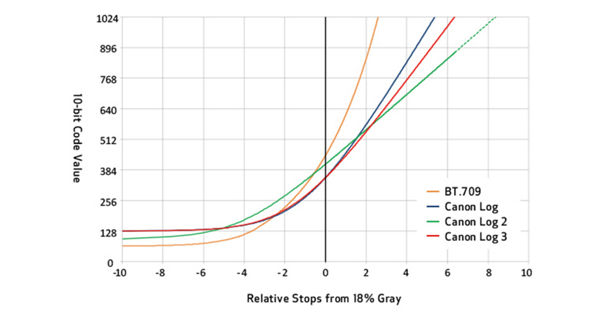

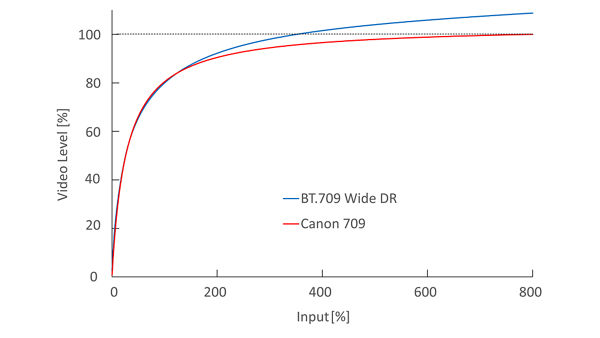

Canon 709 Custom Picture Preset
The Canon 709 CP preset features the same dynamic range as the Wide DR profile with great contrast. Canon 709 provides a rich, cinematic look to your footage right out of the box, with little to no processing or colour grading, helping to save time in postproduction.
RF Mount
The EOS C70 is the first Cinema EOS camera engineered with a built-in RF mount making it compatible with Canon’s expanding line of high-performance RF lenses. The short flange distance helps to dramatically reduce body depth, resulting in a more compact design.
The latest firmware adds compatibility with the RF24-105mm F2.8 L IS USM Z lens and the RF Cinema Prime Series of lenses.
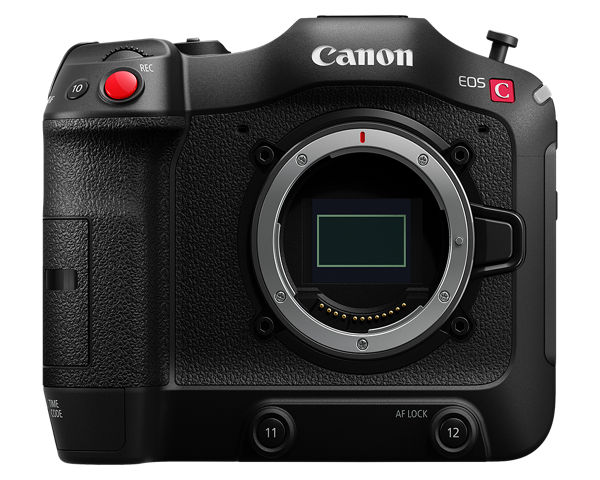

Digital Tele-Converter
The digital tele-converter adds focal length versatility to the EOS C70. The feature allows a user to change the angle of view with image magnification options of 1.5x, 2x, 2.5x or 3x.
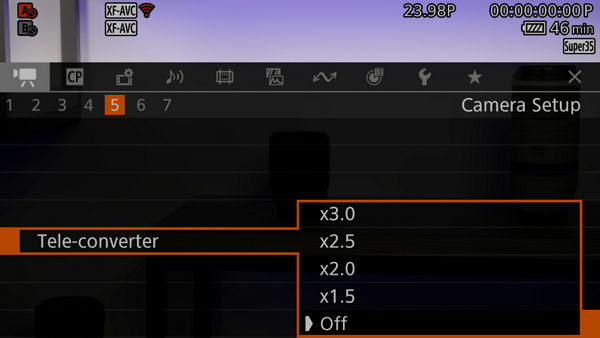

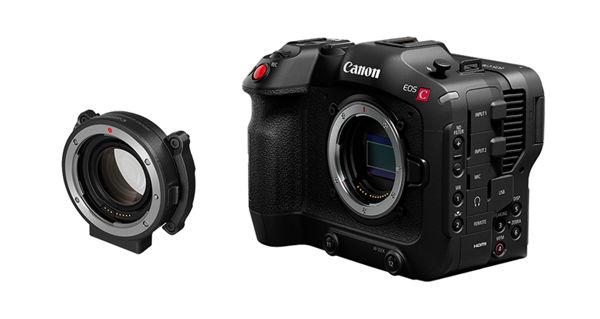

EF Lens Compatibility with Mount Adapter EF-EOS R 0.71x
In addition to RF lenses, the EOS C70 offers tremendous flexibility by also being compatible with Canon's broad line of award-winning EF lenses thanks to the new EF - RF optical adapter, Mount Adapter EF-EOS R 0.71x. This adapter converts light transmission from full-frame to Super 35mm image format. It extends the angle of view and optical sensitivity, while seamlessly integrating with the camera’s optical corrections.
The adapter connects to the camera’s RF mount with additional support from two flanges that securely attach via four screws, making for a very robust connection. Once mounted, the adapter maintains a similar full-frame angle of view on the Super 35mm sensor, while boosting the speed of the attached lens by an average of 1-stop. The adapter also carries all EF information through to the RF contacts, so on certain lenses*, full DPAF, aberration and vignetting correction, and metadata will be available, working just as they do on a native EF mount.
Other adapters that are compatible with EOS C70, include:
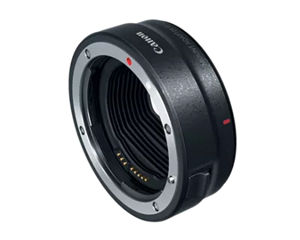

Mount Adapter
EF-EOS R
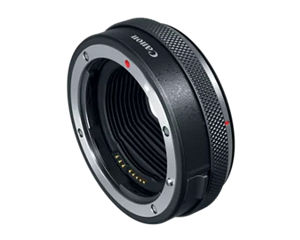

Control Ring
Mount Adapter EF-EOS R
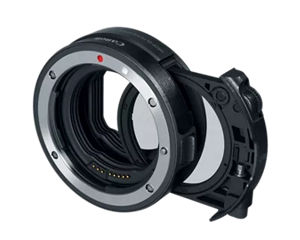

Mount Adapter
EF-EOS R
with Drop-In Polarizing Filter A
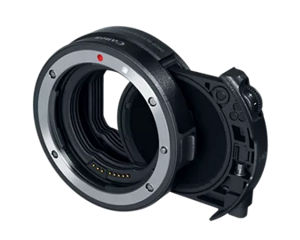

Mount Adapter
EF-EOS R
with Drop-In variable ND Filler A
* Canon plans to gradually expand the list of compatible lenses by providing free-of-charge firmware updates. EF lenses are still compatible with the camera, but Canon recommends that firmware updates be installed in order to effectively utilize functions which link the camera and lens. For a complete list of compatible lenses, please refer to the C70 Instruction Manual.
Waveform Monitor / Vectorscope
Users have the option to double the size of the on-screen waveform monitor and vectorscope and to adjust opacity (transparency) of the monitor, making it easier to see and adjust exposure while shooting. The vectorscope displays the custom picture colour space along with the name for each colour.
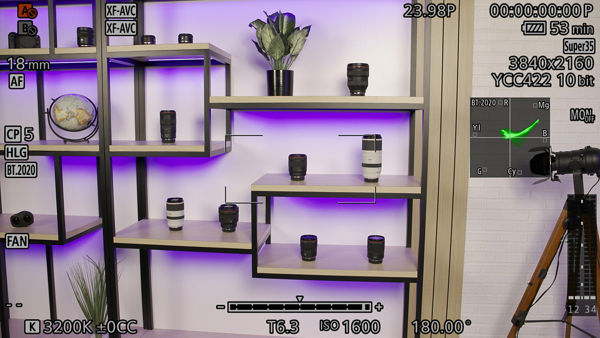

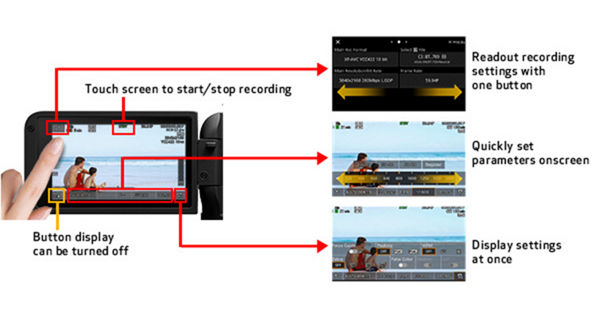

Direct Touch Control
The EOS C70 is equipped with Direct Touch Control which allows easy access to commonly used menu settings on the fully-rotatable LCD screen. Users will be able to simply touch the screen to start/stop recording, access file format and resolution, set ISO/Gain, colour temperature and iris, and display important settings. Shooting settings that were once in various places of the menu can now be accessed with one hand, allowing for on-the-spot changes while holding the camera.
Compact, Uni-Body Design
The EOS C70 features a uni-body design that exhibits a compact form factor and an ergonomic built-in grip making handheld shooting easy and comfortable.


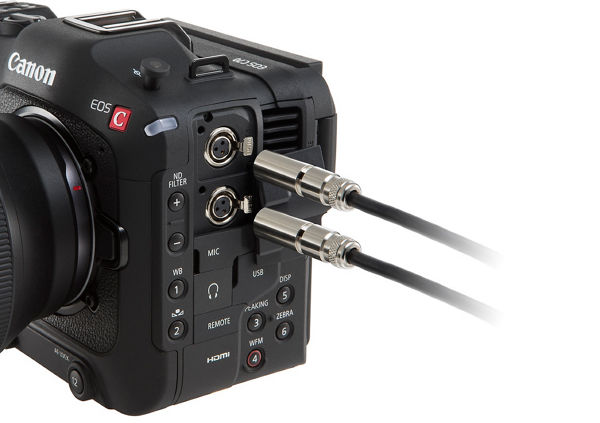

Built-in Mini-XLRS
The EOS C70 is equipped with two mini-XLR audio input terminals for professional audio recording. Additionally, manual audio control dials let users intuitively and quickly adjust the audio control.
Built-in Neutral Density Filter System
The thin, motorized ND filter unit has been specifically designed for the RF mount's short flange back. It offers up to 10 stops of ND, allowing users to shoot in various lighting conditions.


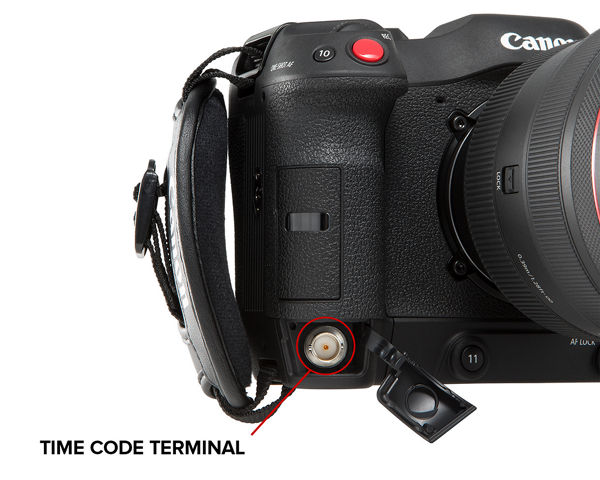

Time Code Terminal
The EOS C70 includes a time code input/output terminal in the lower front of the body that makes synchronizing easier in multi-camera productions.
Dual Pixel CMOS AF
Canon's Dual Pixel CMOS AF technology uses every pixel on the imaging sensor to detect focus and to capture actual image information, offering users high precision focusing and exceptional image quality.
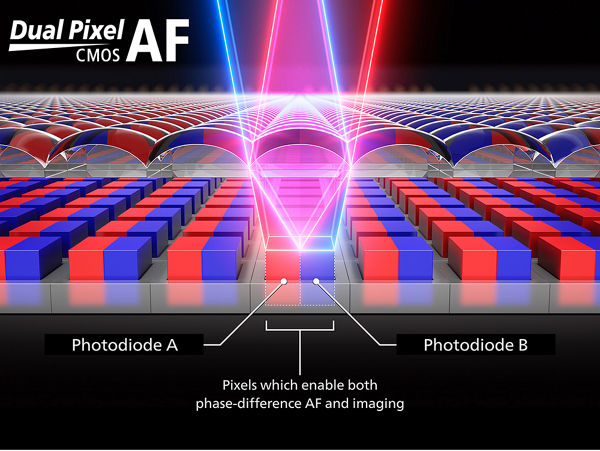

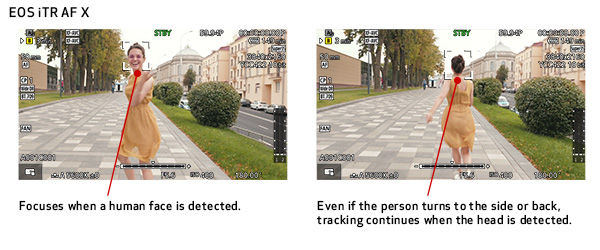

EOS iTR AF X
The EOS C70 is the first Cinema EOS camera to feature EOS iTR AF X, which includes a head detection algorithm developed with deep learning technology. In Face Detection mode, the AF works with this advanced algorithm to dramatically improve distance measuring and tracking reliability.
Face Detection AF in the EOS C70 makes it possible to select a subject via the RF lens’ control ring or camera dial. This allows you to make adjustments without having to change the position of your hands or take your eyes away from the shot. The firmware also enables Head Detection allowing the EOS C70 to detect a subject’s head even when looking backward, and changes the shape of the AF Frame based on the subject detected during tracking.
Eye AF
Eye AF detects and tracks the subject’s pupil for precise focusing. Eye Detection AF, Face Detection AF and Subject Tracking AF during Slow and Fast Recording allow for more accurate auto focus performance at accelerated frame rates
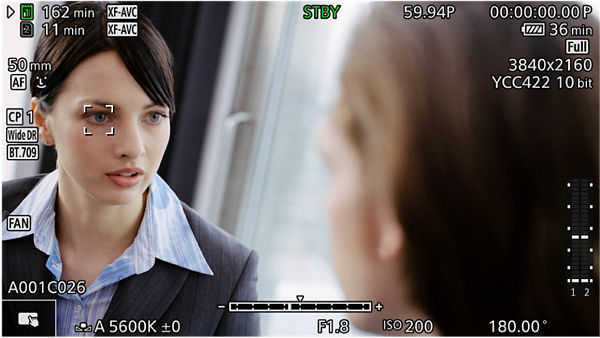

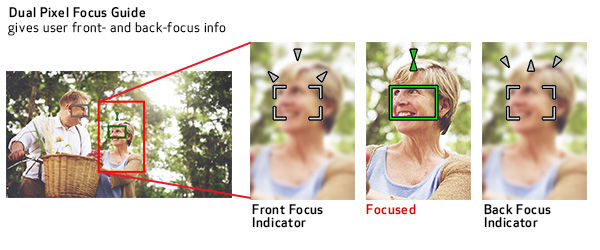

Dual Pixel Focus Guide
The EOS C70 also features Dual Pixel Focus Guide, which is an innovative UI that gives users both front- and back-focus information telling users if the focus position is in the back or the front, aiding in smooth pulls during manual focus.
Focus Meter
The focus meter allows you to select up to three separate focus points in your shot. Each selected point is identified by either a red, green, or blue mark on the viewfinder. When the selected point is in focus, the border of the viewfinder lights up in that colour to easily let you know that you are in focus. This feature can only be used with lenses that support AF functionality.




Electronic Image Stabilization with Coordinated Control
For the first time in a Cinema EOS camera, enhanced image stabilization is available with coordinated control. With an RF lens and the electronic IS in the EOS C70 , coordinated control optimizes hand-shake correction, resulting in better anti-vibration performance than the conventional EF lens and electronic IS together.
Auto ISO/Gain Control
The EOS C70 is the first Cinema EOS camera to feature Auto ISO and Gain Control. EOS C70 can automatically adjust sensitivity by utilizing the DGO sensor characteristics to switch gain smoothly, helping users concentrate on framing without worrying about aperture and other camera settings when moving from indoor to outdoor locations with significant changes in lighting.
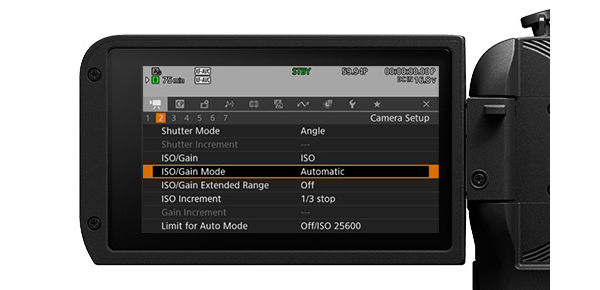



Remote Control Support
The EOS C70 features a remote terminal that allows users to control the camera with Canon's RC-V100 ("Remote A" connection). The multi-functional RC-V100 remote controller provides full access to all important functions, including start/stop, shutter/gain adjustments, zoom/focus/iris parameters, custom picture values, white balance, black gamma, and more.
Canon's IP-based XC protocol helps maximize operability and remote control of camera settings. Using the XC protocol, the camera can be operated by Canon’s RC-IP1000 or RC-IP100 control panels or via the Remote Control Camera Application (RCCA) over an Ethernet Network connection**. Additionally, XC Protocol-enabled third-party controllers (RCP) can control the C70.
A wireless smartphone control option with the release of the Canon Multi Camera Control App for iPhone.***
The Canon Multi Camera Control App provides the ability to control multiple cameras wirelessly from an iPhone via Wi-Fi****. The free app empowers you to have control over recording start and stop, focus, zoom and iris, ND Filters, ISO, Shutter, White Balance, and Custom picture control all while viewing the image from the camera.
** IP/Ethernet connectivity for XC protocol requires the use of USB network adapters.
*** Available for download on the Apple App Store
**** Wi-Fi connectivity requires the use of a USB Wi-Fi adapter.
Please see the Technical Specifications for a list of tested Ethernet and Wi-Fi network adapters.
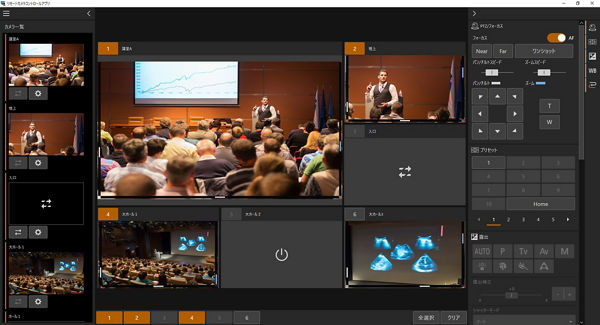

Remote Camera Control Application
The Remote Camera Control Application is an application for centralized control of multiple cameras. It is possible to operate up to nine cameras and display videos at the same time - achieving a "multi-camera operation".
At a video production or broadcasting site, an operator can select a camera from the videos displayed on the "Connected Camera List", within the application and operate it from the "Camera Control Area" in the control panel of the software. The software is included and can be installed immediately without having to prepare a hardware controller in advance making it easy to use for the operator while creating an effective one-person operation.
Dual SD Card Slots with Various Recording Options
The EOS C70 has dual SD card slots for simultaneous recording in different formats, including 4K/HD and XF-AVC/MP4.
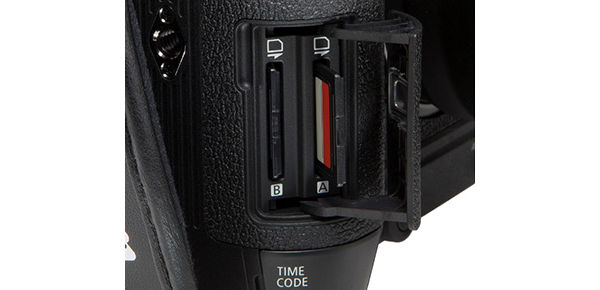



High Frame Rate; 4K 120P and 2K CROP 180P
The EOS C70 is capable of ultra-high frame rates with its new chip design and powerful DiG!C DV7 processor. Frame rates up to 120 fps can be obtained in 4K, while 2K CROP mode provides even greater flexibility with speeds up to 180 fps. The EOS C70 supports Dual Pixel CMOS AF, even when shooting at high frame rates, keeping the camera in focus even when mounted on gimbals or drones. With the Firmware update 1.0.5.1, Eye AF, Face Detection AF and Subject Tracking AF are now available in Slow & Fast recording modes from 24p to 120p.
* V90 SD cards are recommended for Slow & Fast motion recording.
Look File for Recording (User LUT)
The EOS C70 has a new option called Look File to import '.Cube' type 3D LUTs for use while recording. This function greatly improves the flexibility of EOS C70 in professional workflows.
A new viewing assist feature called CMT 709 provides the ability to see on-set how the video will look on a REC.709 monitor when recording in Canon Log 2 or Canon Log 3. This is a great starting point for any colour grading, and facilitates making changes while filming, which reduces the need to "fix it in post."
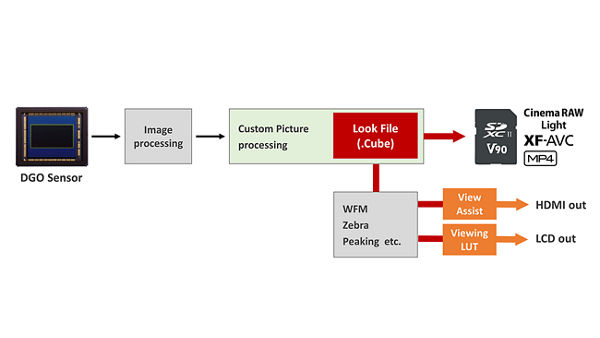

4K 60p Intra-frame Recording
XF-AVC Intra-Frame 60p records at a bit rate of 600Mbps and offers users a lightweight, high-quality codec that helps to minimize storage costs, speed up file transfer and record onto the C70's SD media. Proxy files can be named using the recommended “_Proxy” suffix, which enhances compatibility with non-linear editing systems.
Cinema RAW Light Internal Recording
Cinema RAW Light internal recording capabilities in the EOS C70 camera further enhances the recording capabilities of what's already a powerful digital imaging machine. This compact cinema camera can capture 12-bit Cinema RAW Light internally to compatible SD cards. Cinema RAW Light captures the widest dynamic range from the Dual Gain Output sensor (16+ stops total) and allows the most flexibility to grade captured content. Three quality settings of Cinema RAW Light are available: RAW HQ (high quality), RAW ST (standard quality), and RAW LT (light recording). All three modes are 12-bit regardless of frame rate. Lastly, Cinema RAW Light is compatible with Proxy and Double-Slot recording.
Frame and Interval Recording Modes
Frame and Interval Recording modes add even more recording flexibility to the EOS C70 camera by allowing easy creation of stop motion and time-lapse sequences when recording in the XF-AVC and MP4 formats. Frame recording is for stop motion capture, and every press of the record button captures a user-determined number of frames. Interval Recording sets the interval and number of frames to be captured for time-lapse sequences. Both recording modes help operators further tell their story in a more creative and inspiring form and are easy to use.








